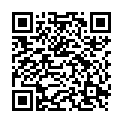|
|
|
| Module code: PIBWI65 |
|
|
4V (4 hours per week) |
|
5 |
| Semester: 5 |
| Mandatory course: no |
Language of instruction:
German |
Assessment:
Written exam and student assignment
[updated 08.05.2008]
|
KI653 Computer Science and Communication Systems, Bachelor, ASPO 01.10.2014
, semester 5, optional course, technical
PIBWI65 (P221-0122) Applied Informatics, Bachelor, ASPO 01.10.2011
, semester 5, optional course, informatics specific
|
60 class hours (= 45 clock hours) over a 15-week period.
The total student study time is 150 hours (equivalent to 5 ECTS credits).
There are therefore 105 hours available for class preparation and follow-up work and exam preparation.
|
Recommended prerequisites (modules):
PIB225 Digital Electronics
[updated 05.12.2011]
|
Recommended as prerequisite for:
|
Module coordinator:
Dipl.-Ing. Hans-Joachim Bohr |
Lecturer:
Dipl.-Ing. Hans-Joachim Bohr
[updated 05.12.2011]
|
Learning outcomes:
This module aims to show students how an electronic circuit is developed from the initial idea through to the fully functioning circuit board. The accompanying lab course provides students with the opportunity to design, manufacture and test an electronic circuit and to document the development process.
[updated 08.05.2008]
|
Module content:
Lectures
1. Introduction
2. Electronic components: characteristic data, design types, properties, standards
3. Circuit design and circuit diagram generation
4. Designing and creating the circuit layout
5. The production of electronic circuits
6. The documentation of electronic circuits
Lab course
1. Circuit design
2. Creating a circuit diagram
3. Creating the circuit layout
4. Making and assembling a printed circuit board
5. Commissioning and testing the circuit
6. Documentation
[updated 08.05.2008]
|
Recommended or required reading:
Lindner, Brauer, Lehmann: Taschenbuch der Elektrotechnik und Elektronik, 7. Aufl., Fachbuchverlag Leipzig, 1999
Nührmann: Das komplette Werkbuch Elektronik, 7. Aufl., Franzis-Verlag, München, 2002
Tietze, Schenk: Halbleiter-Schaltungstechnik, 12. Aufl., Springer-Verlag, Berlin-Heidelberg, 2002
Schramm: Entwurf und Herstellung gedruckter Schaltungen, 8. Aufl., Elektor-Verlag, Aachen, 1999
[updated 08.05.2008]
|
Module offered in:
WS 2012/13,
WS 2011/12,
WS 2010/11,
WS 2009/10,
WS 2008/09
|


